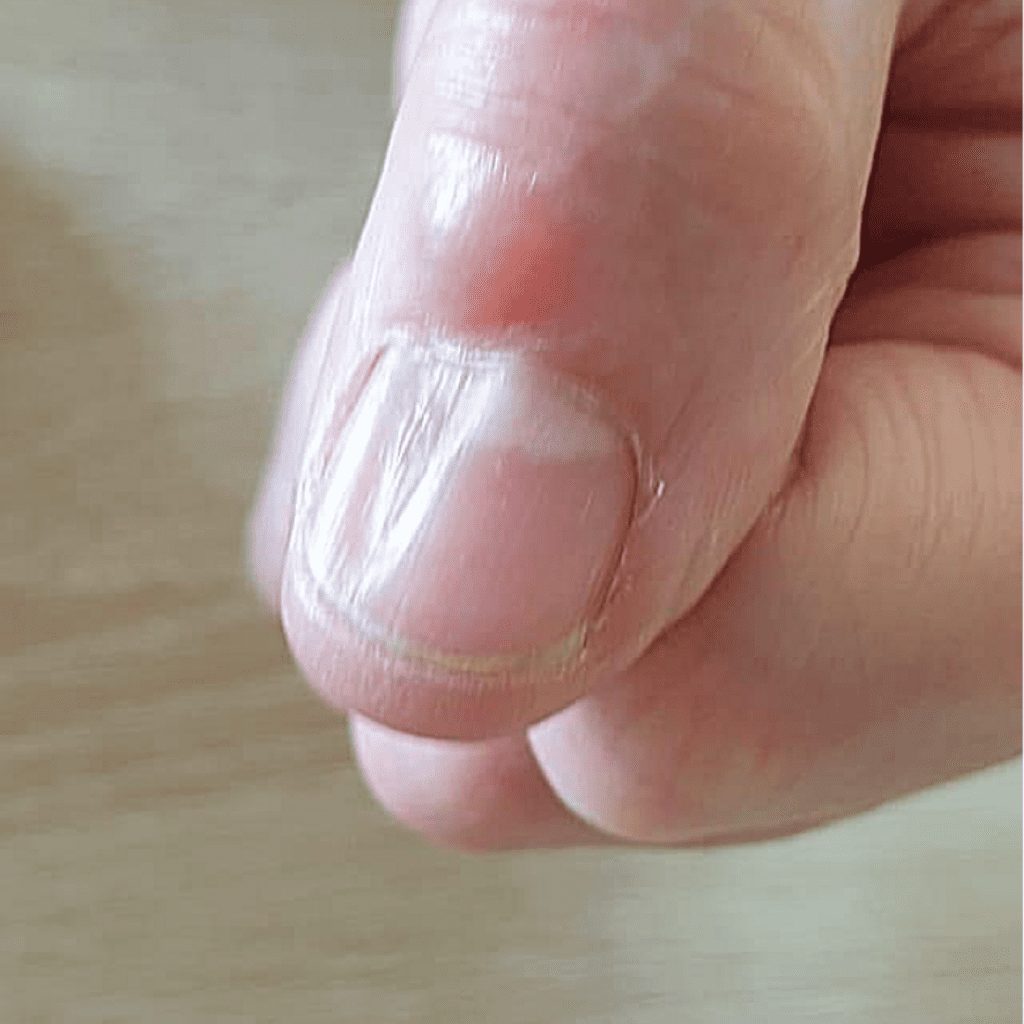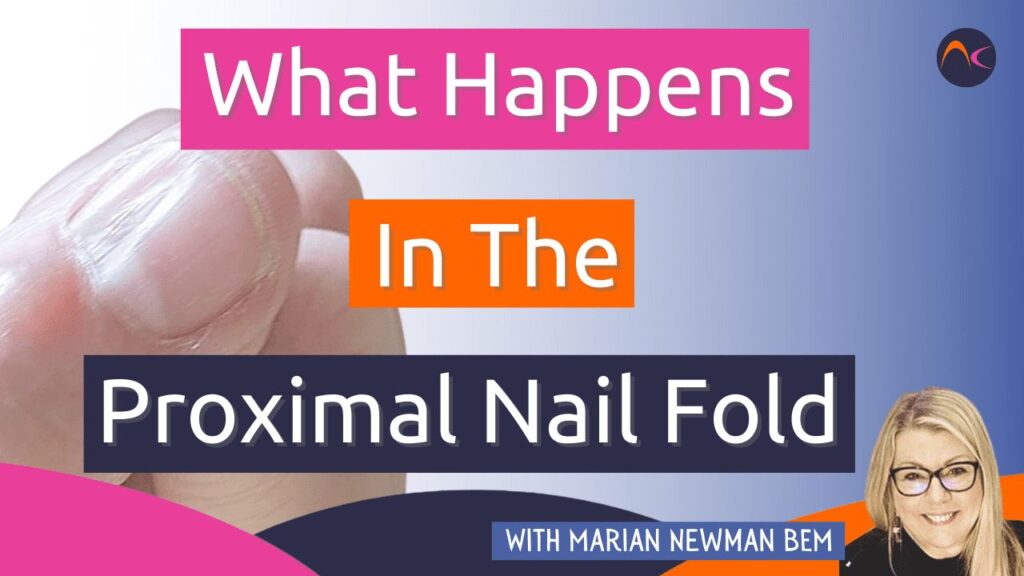This image is a brilliant example of how what happens in the proximal nail fold can affect the nail plate!

The PNF should be healthy and undamaged for a healthy and ‘normal’ nail plate to grow at its maximum strength and thickness. If the PNF is damaged or under ‘threat’ the human body’s protective mechanisms will come into play.
¿Qué le puede pasar al PNF?
– It may become inflamed and swollen.
– It may become infected.
– It may be subject to an allergic reaction.
¿Cómo es posible?
– If it is damaged by an aggressive manicuring technique
– If too much of the living skin at its frame is removed to expose the dermis behind
– If it is cut or abraded to allow pathogens to invade the skin (the hands are particularly susceptible to pathogens without frequent hand washing)
– If it is exposed to allergens and this level passes the level that the individuals immunity can easily fight (every individual is different!)
En este punto, permítanme explicar que esta situación es diferente de cualquier afectación sistémica sobre la matriz de la uña. Si el eficaz proceso de queratinización que se produce en la matriz se interrumpe o se ve comprometido por una afección sistémica, el resultado es diferente. Esto puede ser Líneas de Beauun adelgazamiento general de la lámina ungueal, crestas verticales, etc.
Swelling of the PNF will put pressure on the nail matrix and affect the nail plate. This could be permanent or temporary. This is why care in this area of the nail unit is so important! Key word: UNDERSTANDING
If there is swelling of the PNF it will affect the process in the nail matrix and a thinner nail plate will be produced. Some of the more aggressive manicure techniques produce this effect. This may not be noticed as coatings or enhancements may then be applied that will hide this effect. But if this is done and the nail plate left unprotected by coatings then the thin nail plate will be easily recognised!
Remember, any nail coating needs a good foundation! Weak nail plates will not allow good adhesion, unless the adhesion itself is aggressive! This is a situation that is so commonly seen!
Volvamos a la imagen.
Se trata claramente de una inflamación localizada. Lleva ahí varios meses. ¡Mira lo que ha hecho a la creación de la placa de la uña! La inflamación ha afectado a la matriz de la uña y ha interrumpido el proceso normal de queratinización.
¡Realmente es un ejemplo perfecto de lo que sucede en el PNF tendrá un impacto en el crecimiento de las uñas!
Una inflamación general hará lo mismo y adelgazará la lámina ungueal sin signos evidentes. Pero eso es lo que ocurre.
Comprende la unidad de la uña y haz todo lo posible por proteger las zonas delicadas que contiene. Puede estar dañándola sin querer.
This image has been used to demonstrate what happens. Notice it has not been diagnosed in this Blog! We cannot diagnose. This client has been recommended to see a doctor. It may have a simple solution or it may be something more sinister but should not be ignored nor worked on by a nail professional.
Para comprender mejor salud de las uñas, incluida la interacción entre la cutícula and the proximal nail fold, read this insightful article.


